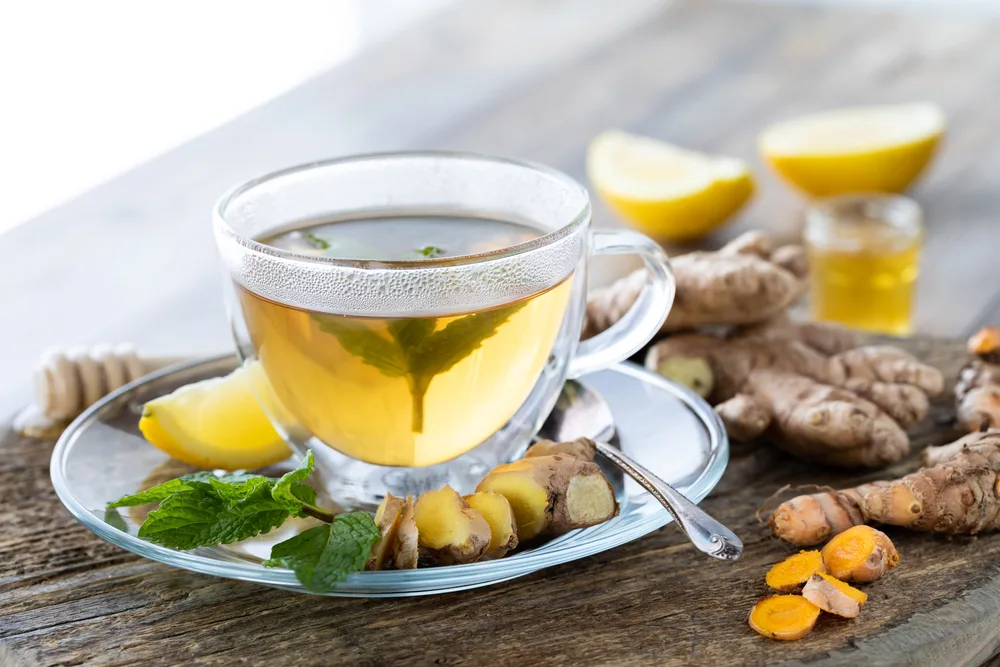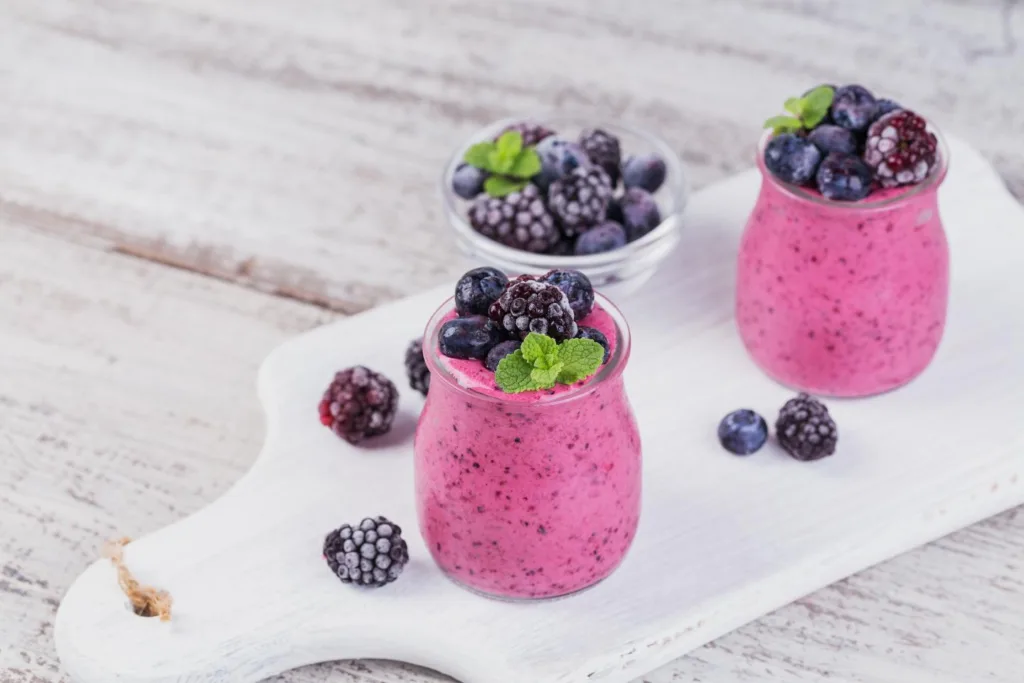Table of Contents
Essential oils are organic extracts obtained from plant sources like stems, bark, flower petals, and roots through the process known as steam distillation. Do these essential oils work for pain relief, or is it a marketing strategy? Do the oils have scientific backing? How do they compare to traditional pain relief medications? This article will examine the strongest essential oils for pain, their types, benefits, and precautions. It will also provide information to help the user make informed decisions.
Strongest essential oils for pain relief
According to a report by the Centers for Disease Control and Prevention (CDC) in 2021, approximately 20.9 percent of adults in the USA, which equals 51.6 million people, were dealing with chronic pain, and 17.1 million people suffered from chronic pain that impacted daily activities (i.e., high impact chronic pain) (1). Prolonged pain can eventually lead to mental health problems such as stress and anxiety. It is important to keep our bodies healthy to avoid these complications and live our lives to the fullest.
While most research on the use of essential oils has been done in animals, there is some evidence that essential oils have benefits ranging from anti-inflammatory properties to pain relief. Some of the strongest essential oils for pain relief include:

Sandalwood oil
Sandalwood oil contains chemicals called alpha santol and beta santol that have been shown to interact with signaling pathways in the body, producing positive effects. While essential oil does not directly relieve pain, there is evidence that it acts as an anti-inflammatory and antioxidant that can secondarily reduce pain. These chemicals have also been shown to have neurologic benefits in mice and may also have some benefits in persons with Alzheimer’s (2).
Ginger oil
Ginger oil contains 115 chemicals and gingerols in the resin roots. These gingerols contain anti-inflammatory and antioxidant properties and have been studied for the complementary treatment of pain and rheumatoid arthritis (3).
Research published in the journal Pharmanutrition found that ginger oils contain terpenes with anti-arthritic properties and reduce inflammation in the joints of mice (4).
Clove oil
Clove oil is obtained from Syzygium aromaticum trees by distilling buds, leaves, and stems and is well known to have pain-relieving and anti-inflammatory properties (5). A research study conducted in Iran found that clove aqueous extract had pain-relieving effects in mice and helped them recover faster after being exposed to pain (6).
The color of the clove oil ranges from pale yellow to colorless.
Myrrh oil
This oil is obtained from the Commiphora molmol tree and is one of the best-known essential oils for pain relief. It has long been used to treat pain in Ayurvedic medicine and indigenous medical systems (7). It is known to have chemicals that act similarly to morphine and interact with opioid receptors in your brain, providing pain relief (8). Animal studies have found that Commiphora molmol extract reduces inflammation and edema after injury (9).
Frankincense oil
This oil is distilled from Boswellia Serrata. It has a woody aroma and induces a relaxing effect. It mixes well with lemon, sandalwood, and lavender oil. Frankincense has been studied for its ability to boost the immune system and for alleviating various types of pain, including arthritis pain (10).
Bergamot oil
Bergamot oil contains several known anti-inflammatory compounds such as carvacrol and linalool (11, 12). A review published in Frontiers in Pharmacology used Bergamot Oil as a standard for other essential oils to be compared against due to its well-known mechanisms for stopping pain signals in the body. It was found to be one of the most research-supported essential oils for pain relief (13).
Eucalyptus oil
Eucalyptus oil provides a warming and cooling effect that alleviates pain. One study using 70 patients with rheumatoid arthritis found that inhaling vapor with eucalyptus over an extended period helped relieve perceived pain (14). Eucalyptus essential oil can be found in creams, sprays, and mists.
Valerian root oil
Valerian root has been found to help improve sleep quality and reduce symptoms of anxiety and depression. Improving sleep and mental health is well known to help reduce perceived pain (15, 16). It has also been found to ease menstrual cramps (17, 18).
Peppermint oil
Peppermint oil has a sharp odor gained from the leaves of the peppermint plant. A study published in 2019 found that smelling peppermint oil acted as effectively as inhaled lidocaine in treating migraine attacks in individuals, subsequently improving well-being (19). However, Peppermint oil contains menthol, which is known to cause asthma and breathing difficulties in children. Peppermint oil may also cause jaundice in children with G6PD deficiency and should be avoided in pregnant women.

Tips for using essential oils to relieve pain
Before using any essential oil, you should always do a patch test. To perform this:
- Mix 3-5 drops of preferred essential oil with one tablespoon of carrier oil.
- Apply a small amount of this mixture to the skin on the forearm.
- You should wait for 24-48 hours to see optimum results.
- If you don’t observe any adverse reaction, the essential oil is good to use.
How can you find quality essential oils?
The most important thing to keep in mind while buying essential oils is the quality of the product. Always ensure to:
- Check label
Read the ingredient label and check for the Latin name of the essential oil of interest. Many companies often sell adulterated essential oils mixed with vegetable and aroma oils. One should check purity before purchasing the oils.
- Brand of the essential oils
Make sure to also consider the reputation of the brand. I always prefer to buy the strongest essential oils from established brands. Before making a purchase, take a look at the company’s goals and objectives and look for reviews of the company.
- Use of dark colored containers
Make sure the bottles are blue or black and not plastic. The essential oils are concentrated and can be damaged by certain chemicals and sunlight.
- Avoid buying fragrance oils
Fragrance oils contain many chemicals. We suggest refraining from purchasing fragrance oils and buying essential oils, which are very pure in consistency. - Price comparison
The prices of these oils can vary based on their method of formulation. A single brand can offer you a range of prices on their oils. You need to know that sandalwood and rose oils are expensive, but orange oils are cheap. If you find an expensive oil at a more affordable price, then the oil is likely to be impure.


How do fake essential oils reach the stores?
Essential oils are not regulated by any organization, such as the Food and Drug Administration, in the U.S.; thus, there is no standard or regulation to control their purity. Essential oils have recently gained in the wellness industry, although they have been used for a decade. Instead of the essential oils, some of the bottles may be filled with synthetic oils or fragrances with the motive of making money. If you believe that the oil is real, consider the parameters:
Sources of plant
Analyze the plant sources as their quality can merely depend on the climatic conditions and used chemicals.
Mode of processing
The processing method also plays a crucial role in assessing quality. It is hard to tell if the oil is genuinely pure or diluted.
Packaged material
The oils that are handled and stored can affect their quality. Even the best oil can turn worse if it is not in a sealed dark glass bottle.
Potential side effects
Just because something comes from nature doesn’t mean it is safe.
Plants and herbal products have many active ingredients that can be harmful, and the strongest essential oils used for pain relief are no exception. However, when you breathe them or mix them with the base oil for your skin, it can cause side effects such as:
Rashes
Essential oils contain some chemical elements obtained from plants. Thus, they can cause a skin reaction such as rash, redness, or swelling, commonly known as irritant contact dermatitis. This means that a particular ingredient present in the essential oil is having an adverse reaction on your skin and is causing injury (20). This usually leads to rashes appearing soon after applying the strongest essential oils.
Asthma attack
The American Lung Association warns that breathing in the strongest essential oils can trigger asthma attacks, as these oils contain volatile organic compounds (VOCs). The strong fragrance of the essential oils can trigger your airways to tighten up, which leads to cough and breathing problems (21). Make sure to use a small amount at first; if you are prone to asthma, talk to your doctor.
Headache
Some essential oils, such as camphor, eucalyptus, thujone, and fennel, contain properties that can lead to severe headaches. So, it is good to be cautious while using essential oils if you are suffering from cluster headaches (22). It is hypothesized that some essential oils may stimulate neurons of the hypothalamus and trigeminovascular systems in the brain, thereby triggering headaches.
To avoid this, one should use the oils after consulting the healthcare practitioner.
Who should not use essential oils?
While essential oils offer various benefits, they also pose some limitations. Individuals suffering from asthma or COPD should avoid using essential oils because the oils may cause additional breathing issues.
Pregnant and lactating women should also avoid the use of essential oils because they can cross the placental barrier and also pass to maternal milk, leading to potential complications (23). Children aged six or below should be given very low amounts of essential oils for pain relief, as essential oils like peppermint oil can lead to breathing problems (24). So, be sure to seek medical help before using it.



What essential oils are good for swelling and pain?
Which oil is the most anti-inflammatory?
Thyme oil is known as one of the most anti-inflammatory oils. It suppresses the action of multiple inflammatory signaling proteins, such as IL-1β, IL-6, TNF-α, IL-8, and MCP-1, blocking inflammatory pathways (27).
What is the most versatile oil?
Lavender oil is versatile. It eases inflammation, reduces stress, and fights back skin infections (28). In addition, it mixes well with a couple of essential oils easily.
What is the best oil for bones and joints?
Several essential oils, such as lavender, ginger, eucalyptus, basil, turmeric, and frankincense, help to heal bones and joints.
What is the fastest home remedy for pain?
For the first two days after injury, use ice packs to reduce swelling and inflammation. You can also use pain-relieving over-the-counter medications such as non-steroidal anti-inflammatories like ibuprofen or try rubbing one of the essential oils discussed above over the joint or injured area.
Summary
Although there are a variety of essential oils for pain relief, it is important to choose the right one and use it carefully. Some of the strongest essential oils used for pain relief are Myrrh and Bergamot oil. But they can also cause side effects like rashes and headaches. It is advisable to do a patch test before use and speak to your healthcare provider, especially if you are pregnant or have young children. Whenever you buy the strongest essential oils for pain relief, look for quality products from reputable brands and avoid synthetic fragrances. Keep in mind that essential oils offer many benefits, but they are not without risks. So, use the essential oils responsibly and safely.

















Comments
0